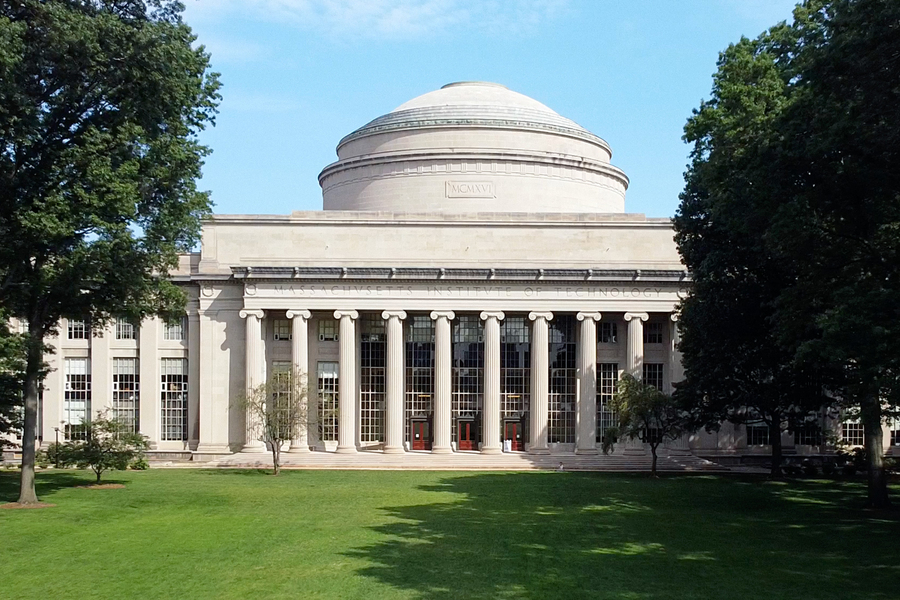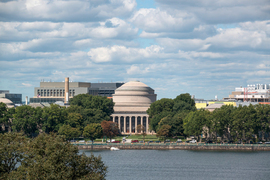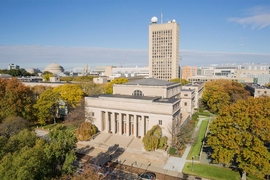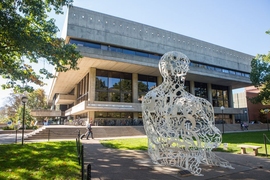MIT announced today that unusually strong performance by its endowment will enable greater support for undergraduate and graduate students, and investment in research operations that will strengthen its capacity to advance breakthrough science and technology.
The Institute’s unitized pool of endowment and other MIT funds recorded an investment return of 55.5 percent during the fiscal year ending June 30, 2021, as measured using valuations received within one month of fiscal year end — its strongest annual performance in more than 20 years. At the end of the fiscal year the endowment’s value stood at $27.4 billion, an increase of $9 billion.
President L. Rafael Reif, Chancellor Melissa Nobles, and Vice President for Research Maria Zuber shared the news in a series of letters today to MIT faculty, staff, students, and postdocs. MIT’s Report of the Treasurer for fiscal year 2021 was also released today.
“This is a once-in-a-generation opportunity, and we must use it in a way that inspires big ideas and builds a stronger MIT at a time when the world needs breakthroughs in science more than ever,” President Reif says.
Reif says the new funds will be deployed in ways that benefit students at all levels, and make the Institute more capable of advancing the cutting-edge research and science the world needs. Task Force 2021 and Beyond (TF21), an MIT-wide process of mapping the future of the Institute that was launched shortly after the onset of Covid-19, has helped identify key priorities, as have reports of MIT’s visiting committees, which examine and advise on every aspect of the Institute. Priorities identified by TF21 and the visiting committees include:
- increasing financial support for MIT’s 7,000 graduate students, who face rising housing costs in the Boston area, and most of whom contribute directly to research and teaching;
- improving student life by continuing to modernize campus facilities, strengthening classroom and digital learning experiences, and providing greater support to ensure success at MIT; and
- growing MIT’s investments in core research infrastructure, such as computing power.
Beyond the opportunities for community feedback offered through TF21 — which has involved over 200 faculty, staff, and students, as well as alumni and student advisory boards — members of the MIT community will have opportunities to offer input on spending priorities through the budget process that unfolds each fall.
“Budgeting is an act of balancing,” Provost Martin Schmidt says. “Our mission of learning and discovery will be just as pivotal tomorrow as it is today. As we unlock some of these gains to strengthen MIT’s work right now, we have to do it in ways that keep our work strong in the long run. Often, breakthroughs in science and technology take years and years of steadfast support before they pay off. We aim to strike that balance in a compelling way.”
About the MIT endowment
MIT’s endowment is intended to support current and future generations of MIT scholars with the resources needed to advance knowledge, research, and innovation. As such, endowment funds are used for Institute activities including education, research, campus renewal, faculty work, and student financial aid.
In the last fiscal year, returns from the unitized investment pool containing MIT’s endowment provided $851 million, or about 30 percent of campus operating revenues. Under the Institute’s usual endowment spending formula, designed to smooth the highs and lows of market returns over time and ensure stable funding for its education and research, deployment of last year’s unexpected gains to support MIT’s operations would be deferred significantly.
The 55.5 percent return on the investment pool containing MIT’s endowment over the past fiscal year enables the Institute to put these gains to use more quickly, while still maintaining appropriate balances to meet future needs. Accordingly, MIT plans to increase endowment payout by 30 percent starting in fiscal year 2023 (which begins on July 1, 2022), aiming to “accelerate the work the world needs right now and deepen the support our students need,” Schmidt says.
Taking this step will provide an estimated $286 million in additional resources to support the work of the MIT community in the coming fiscal year. It will also set a new baseline for endowment support for the budget in following years.
“We have strived to craft a carefully calibrated approach,” Executive Vice President and Treasurer Glen Shor says. “The steps we are taking balance today’s needs for meaningful investment in the Institute, while taking care to preserve our endowment for future generations of learners.”
Endowment funds help the Institute cover everything from utilities, to support for teaching and learning, to the sudden need for a community-wide Covid testing system. Funds from the endowment are also critical to supporting the Institute’s need-blind undergraduate admissions policy, which ensures that an MIT education is accessible to all qualified candidates regardless of financial resources.
MIT works closely with all families who qualify for financial aid to develop an individual affordability plan tailored to their financial circumstances. In 2020-21, the average need-based MIT scholarship was $45,146. In the fall of 2020, MIT offered an additional $21.8 million in aid ($5,000 to every student) to help cover pandemic-related expenses. Fifty-seven percent of MIT undergraduates received need-based financial aid, and 38 percent of MIT undergraduate students received scholarship funding from MIT and other sources sufficient to cover the total cost of tuition.
The core of MIT’s endowment is made up of gifts from alumni and friends who make “endowment gifts” with the expectation that the funds will be invested in ways that enable ongoing benefits over many years. Those gifts are frequently restricted by donors for certain kinds of uses, such as need-based scholarships, for example, and cannot be used for any other purpose. This means that MIT’s ability to set spending priorities for the new funds is limited by endowment restrictions.










